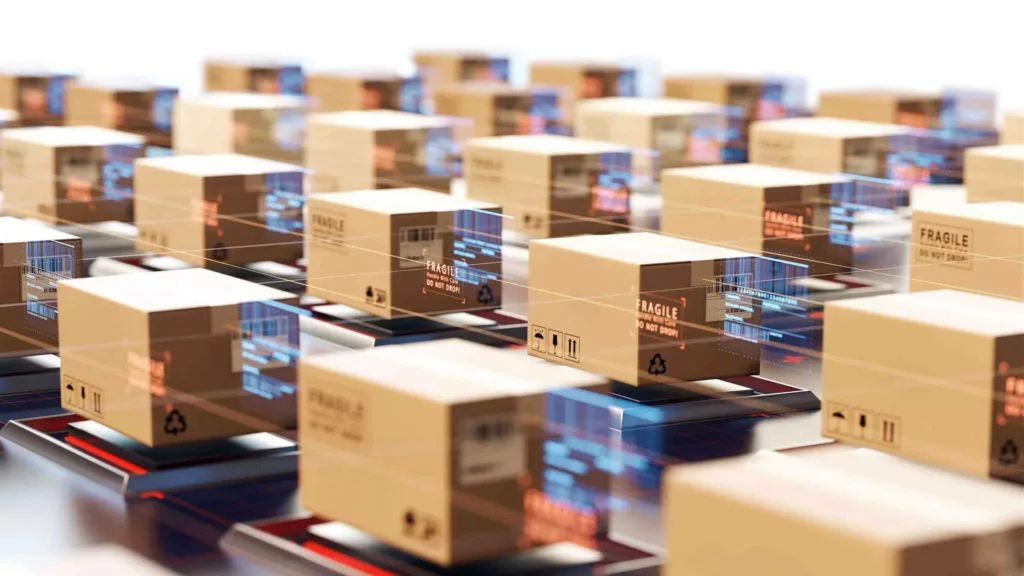- Posted on April 6, 2022
- by Benedict Dohmen
Home / Amazon Seller Related News / What Is Happening in China? The Supply Chain Issues that Every Amazon FBA Seller Has to Deal with
What Is Happening in China? The Supply Chain Issues that Every Amazon FBA Seller Has to Deal with

Amazon makes it incredibly easy for FBA sellers to sell products on the marketplace in seemingly no time at all. However, an inevitable aspect of the Amazon FBA program is dealing with suppliers. With great variety comes an equally great amount of risks and supply chain problems that cause any Amazon FBA seller undue stress.
In this article, we’re giving you an inside look into the current Amazon supply chain issues that you might have to deal with and how you can overcome them.
Table of сontents:
What is causing the supply chain issues?
With the world’s current economic state and the most recent pandemic-induced shortages, there’s no doubt that you’re worried about the possible delays and supply chain challenges you’re about to face.
Here’s a closer look at the three major supply chain problems linked to world events, especially with Chinese manufacturers.
Delivering items on time
In light of the pandemic, it has become increasingly difficult to estimate when orders and supplies will be delivered. Despite international shipments becoming more and more accessible, the fact stands that many are struggling to deliver both local and international shipments on time.
Port congestion and backlogs are the number one issue currently bothering all Amazon FBA sellers. Although the relevant authorities are working hard to solve this issue, there is no definitive deadline for unloading containers. On the other hand, it takes days for truck drivers to get their containers and distribute products to the warehouses.
The delay in shipments and lack of supplies has turned into a bidding and price war for many Amazon FBA brand owners. Furthermore, it has caused issues where items may be over-listed and can not be delivered on time when you run out of inventory.
So what can you do? With proper planning, you can avoid these delays and stocking issues. While there is no definitive way to determine exactly when orders will arrive, you can minimize risks by examining customer purchasing behavior and cross-checking it against supplier delivery times.
For example, if certain products are expected to sell out within three months, and your stocks tend to get delivered within 2-3 weeks, it’s a good idea to order supplies at least a month before you run out.
Another good tactic would be to revise your product lists and pick only the products that make the most difference in your customers’ lives and your balance sheets so you can stay in business and turn a profit.
Not sure you can stay on top of inventory? Several types of stock-keeping software are available that cater to small and mid-sized businesses. This kind of software will alert you after your inventory reaches a predetermined level.
However, be careful not to overstock your inventory because this can be a very expensive mistake to fix in the future.
Raw material shortages
Prices spiked during the COVID-19 pandemic for several reasons, not just logistic issues. For instance, local restrictions and the current health climate (employees getting sick or isolating) forced many factories to either shut down or reduce staff to a skeletal workforce, resulting in the lack of raw materials.
Another reason for a price spike was that workers and factories needed to follow new, expensive safety protocols.
So, what can you do to remedy your raw material shortage woes?
The first step is to prioritize critical shortages. Make sure you categorize them by buyer and supplier and find which ones need to be addressed first. This way, you can stay ahead of the trends and keep your stocks filled for some of your most popular products.
Next, it’s important to increase accountability and transparency with your buyers. There’s nothing anyone can do during the pandemic except wait—delays happen, and price increases are necessary to keep businesses afloat.
It’s important to remain honest and simply explain the situation to your customers. This way, you won’t have to worry about losing them—most are in your position and will empathize.
Explosion in consumer demand
Online marketplaces like Amazon were expected to flourish with the whole world locked indoors. But what exactly were people spending their money on (groceries and essentials aside)? Lockdowns and a lack of things to do led people to address home renovation and improvement projects.
Consumer trends during the COVID-19 pandemic have shown that demand for home organization supplies, renovation equipment, and work from home essentials rose sharply. With this growing demand also came shortages in supply.
If you’re in a similar position, you can stay afloat simply by keeping up with your data—figure out what the demand is and set up a new system for ordering ahead to ensure you can keep up with your customers’ shopping needs.
Relief in sight?
It’s clear that supply chain issues are as old as time—every time there’s a natural disaster or a global political event the supply chain is affected. These past few years have been no different with trade tensions between the US and China, BREXIT, COVID-19, the Suez Canal incident, and more.
The good news is that the supply chain industry is resilient—and it always bounces back. While experts predict that 2023 will mark the return of some normalcy in the supply chain, current efforts such as digital transformation, local sourcing, better supplier relationships, reverse logistics, and automation in warehouses will help mitigate issues in the meantime.
Key takeaway
All Amazon FBA sellers will deal with supply chain issues at some point in their entrepreneurial journey. And being a successful seller is not a question of how well you run your company, but rather how well you overcome these obstacles. After all, about a hundred things could go wrong, none of which you’ll be able to control.
It’s important to remember that major supply chain problems occur when you don’t plan and double-check who you’re working with. To minimize the risks and make sure your stock isn’t held up, take the time to look for partners and manufacturers who are highly recommended and highly trusted in the industry.
On the other side, if handling Amazon has become too stressful consider preparing for an Amazon exit. The first step in exiting your Amazon FBA is finding out its true value and how much you can get at the end of the sale.
Benitago offers a FREE business evaluation within 24h, you just need to fill in this form!

Now it is your turn – do you have a question for the Benitago team? Or maybe you want to start a conversation with like-minded individuals? Feel free to share your thoughts in the comment section below!
Related Posts.

- Posted on February 24, 2022
- by Benedict Dohmen
- Posted on February 18, 2022
- by Benedict Dohmen



